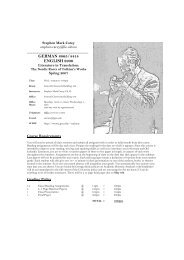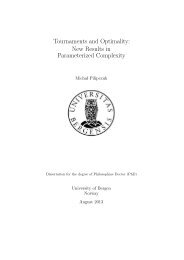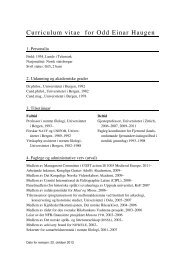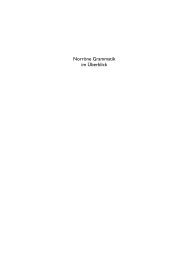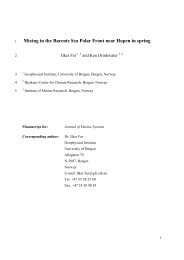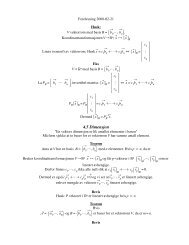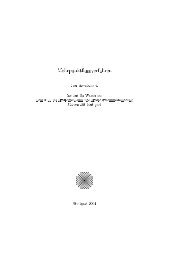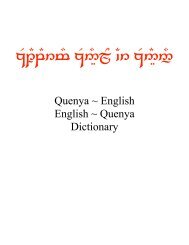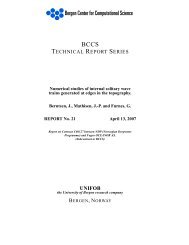Rational Curves in Calabi-Yau Threefolds
Rational Curves in Calabi-Yau Threefolds
Rational Curves in Calabi-Yau Threefolds
You also want an ePaper? Increase the reach of your titles
YUMPU automatically turns print PDFs into web optimized ePapers that Google loves.
<strong>Rational</strong> <strong>Curves</strong> <strong>in</strong> <strong>Calabi</strong>-<strong>Yau</strong> <strong>Threefolds</strong> 3939<br />
to show this for L 2 ¼ 12. Assume that h 0 (R D) > 0. Then, we have<br />
R ¼ D þ D;<br />
where jDj is the mov<strong>in</strong>g part of jRj and D is the fixed part. S<strong>in</strong>ce R.D ¼ 3,<br />
we get D.D ¼ 3, and s<strong>in</strong>ce D 2 ¼ 0 we get D 2 ¼ 6. Moreover D.L ¼<br />
(L 3D).L ¼ 3. This yields<br />
D ¼ G1 þ G2 þ G3;<br />
where the Gi’s are smooth non-<strong>in</strong>tersect<strong>in</strong>g rational curves satisfy<strong>in</strong>g<br />
Gi.L ¼ Gi.D ¼ 1 for i ¼ 1, 2, 3. Writ<strong>in</strong>g Gi ¼ xiL þ yiD þ ziG, the three<br />
equations Gi.L ¼ 1, Gi.D ¼ 1 and G 2 i ¼ 2 yield at most two <strong>in</strong>teger solutions<br />
(xi, yi, zi), whence at least two of the Gis have to be equal, a contradiction.<br />
So we have proved that h 1 (H iD) ¼ 0 for all i 0 such that<br />
H iD 0. By Lemma 5.2 it follows that the scroll T is of maximally<br />
balanced type, whence smooth. &<br />
In the next section we will describe under what conditions G is a<br />
smooth rational curve. We end this section with two helpful lemmas.<br />
Lemma 5.6. Assume L is ample. Let D xL þ yD þ zG be a divisor on S<br />
such that D 2 ¼ 2 and set d 0 :¼jdisc(L, D, D)j.<br />
Then d 0 ¼ z 2 d, and is zero if and only if D L 2D and m ¼ 5.<br />
Proof. It is an easy computation to show that d 0 ¼ z 2 d. Hence it is zero if<br />
and only if z ¼ 0. It is then an easy exercise to f<strong>in</strong>d that D L 2D and<br />
m ¼ 5. &<br />
Lemma 5.7. Let B :¼ 3L mD. (We have B 2 ¼ 0 and B.D ¼ 9, whence by<br />
Riemann-Roch B > 0.) If D is a smooth rational curve satisfy<strong>in</strong>g D 2 ¼ 2<br />
and D.B 0, then we only have the follow<strong>in</strong>g possibilities:<br />
m ¼ 4 and ðD:L; D:D; D:BÞ ¼ ð1; 1; 1Þ; ð4; 3; 0Þ; ð4; 4; 4Þ;<br />
ð5; 4; 1Þ; ð6; 5; 2Þ; ð8; 6; 0Þ;<br />
ð9; 7; 1Þ<br />
m ¼ 5 and ðD:L; D:D; D:BÞ ¼ ð1; 1; 2Þ; ð3; 2; 1Þ; ð4; 3; 3Þ<br />
m ¼ 6 and ðD:L; D:D; D:BÞ ¼ ð1; 1; 3Þ; ð2; 1; 0Þ; ð3; 2; 3Þ;<br />
ð4; 2; 0Þ:



